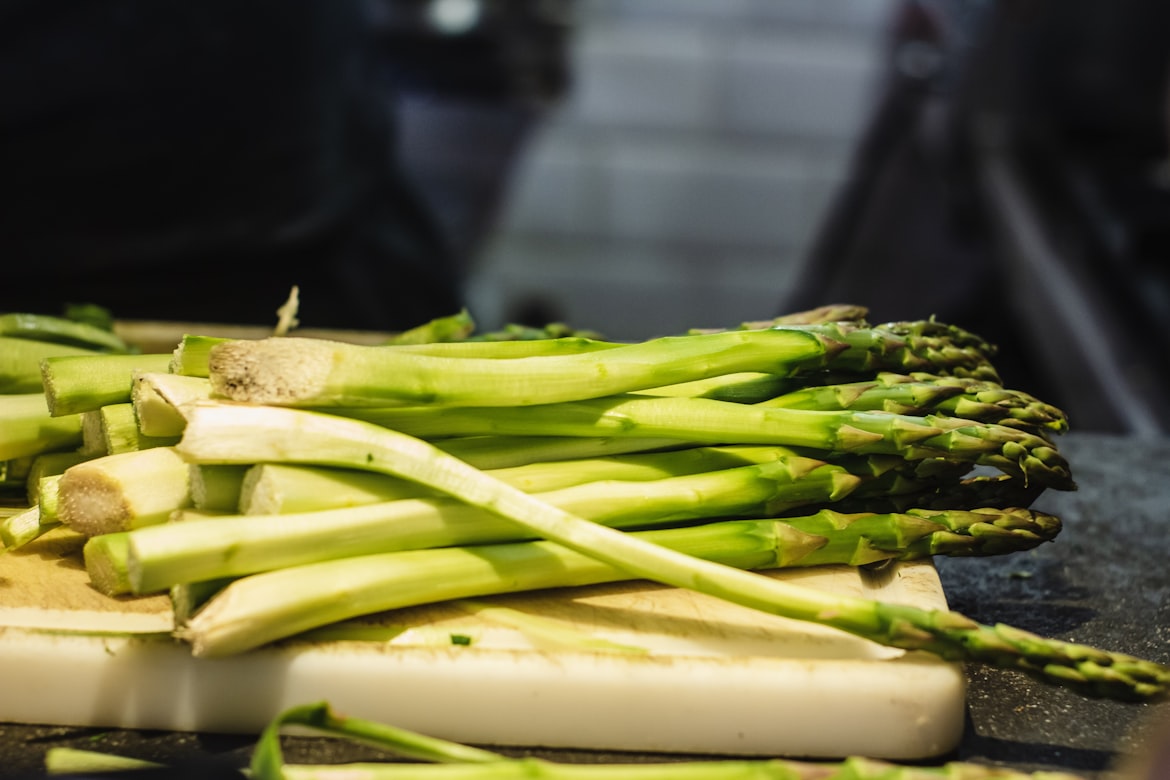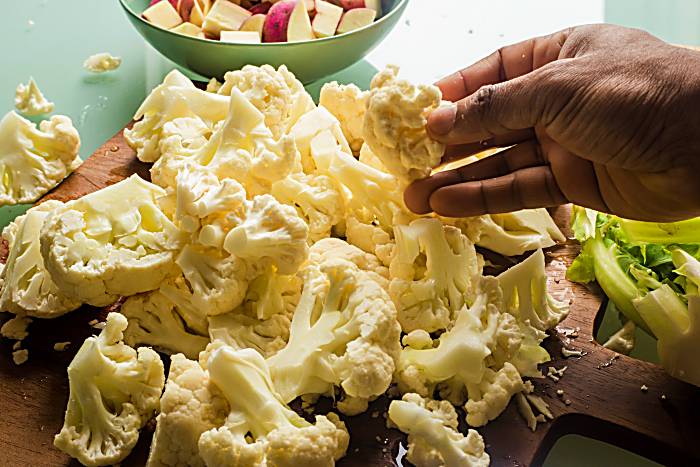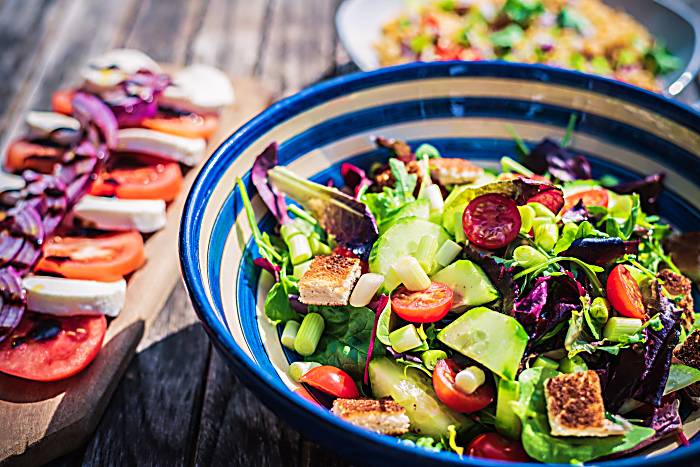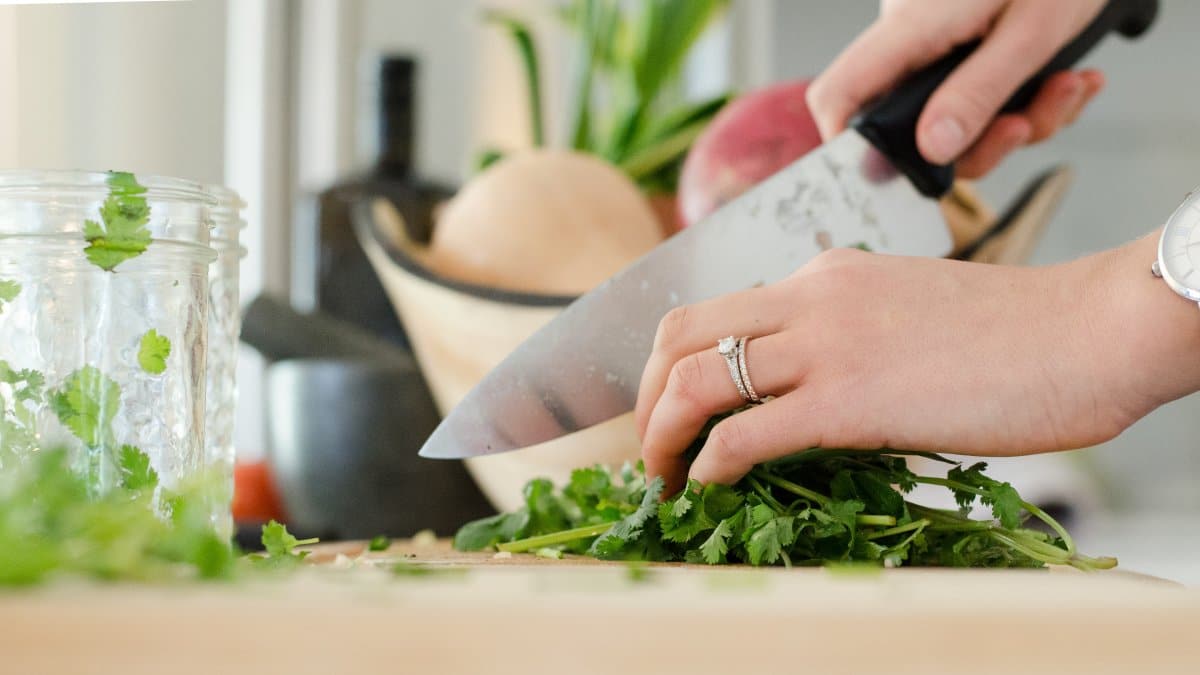Do you want to learn how to cook healthy, delicious meals for yourself and your family? Perhaps you’re sick of all those lunch box diets, or you want to do more than just get your vegan favourites delivered. The good news is that healthy cooking, even for beginners, is easier than you think!
And if you think that “healthy” cooking is limited to vegetarian and vegan fare or food that lacks flavour, you might be surprised with what you can create with healthy, nutritious options.
So get your chopping boards, wooden spoons, and taste buds ready; here are the top tips for beginner-friendly healthy cooking!
1. Stock your pantry with whole foods
What makes food “whole”? Simple: the less processed it is, and the closer it is to its “natural” form, the better. That means more fruits and veggies, less packaged goods, more brown rice/bread instead of their refined counterparts, and as few unpronounceable ingredients as possible. Ditch the hot dogs, bacon, and salami – not only are they full of preservatives, but they’re also full of saturated fat, too.

2. Shop local and seasonal
Whether you’re simply shopping for your household’s daily veggie content, or exploring vegan cooking for beginners, it always pays to shop local and seasonal. Why? Because seasonal, locally-farmed fruits and veggies don’t need to travel far, the crops are harvested in peak condition, and you get more nutrients out of them. Plus, you get to support your local farmers!
3. Ditch the generic vegetable oil
Oil isn’t all bad – just make sure you cook with heart-healthy ones, like avocado, coconut, and olive oil. Avocado oil, in particular, is flavour-neutral, making it great for just about any recipe.
4. Explore seasoning and spices
Generally, it’s perfectly fine to add a dash or so of salt to your meals (nutritionists recommend less than one teaspoon per day). But if you’re really conscious of your sodium intake, you can always experiment on all sorts of seasoning to get the same burst of flavour without going overboard on salt.
Stock your pantry with spices like garlic powder, paprika, cumin, and fresh or dried herbs such as basil and oregano. You can also ditch your regular soy sauce and use coconut aminos instead as an alternative.
5. Cut down on sugar
That goes for table sugar (white and brown)! The same goes for maple syrup, which adds a whopping 12 grams of added sugar in a single tablespoon – easily half the recommended 25 grams of the maximum daily intake recommended by the World Health Organization. Instead of slathering your banana pancakes in syrup, why not add a side of fresh fruits instead?
And as a temporary fix, the American Heart Association also recommends non-nutritive sweeteners (like Stevia, monk fruit extracts, and coconut sugar) over refined sugars.

6. Make healthy swaps
It doesn’t have to be drastic! You can do the following simple hacks:
- Substitute poultry or seafood in your favourite pork or beef-based recipe.
- If you’re really craving a delicious, meaty stew, make sure to opt for leaner cuts like top round steak or pork tenderloin.
- Ready to take it to the next level? Instead of dairy milk, try soy, almond, or oat milk.
- Make roast veggie chips instead of bingeing on a bag of crisps.
- Sub cauliflower for rice, or spinach for meat.
- If you love pasta, try spiralised zucchini (aka zoodles)!
- And even beginners can cook with tofu and use it as a sub in meat-based dishes.
7. Don’t limit yourself to steaming or poaching
While these are tried-and-tested healthy cooking methods, you can also venture into other methods such as roasting, baking, grilling, or broiling. These are a great way to cook entire meals (roast chicken with a side of roast veggies, anyone?), and they keep you from getting bored with what’s on the menu.
What you should avoid are recipes that involve deep-frying or sautéing in animal fat. When you do need to sauté or fry your food, use a non-stick pan so that you use as little oil as possible.
8. Know your portions
Harvard’s “Healthy Eating Plate” consists of ¼ whole grains, ¼ proteins, and the other half filled with fruits and veggies. That means you should have more of those leafy greens, crunchy root veggies, and juicy tomatoes on the menu! This doesn’t just go for vegetarian or vegan cooking for beginners – everyone should have more fresh produce on their plate!
9. Incorporate more fruits and veggies into your meals
This could be as easy as adding a side of your favourite veggies to each meal, slipping some spinach into your fruit smoothie, having fruit as a dessert instead of chocolate cake, or making a tofu and vegetable stir-fry.
When cooking vegetables, do not overcook them or use too much water when boiling, since this will cause the crunchy, fresh produce to lose important nutrients. Also, if you can keep the peel on your fruits or veggies, do so since these contain a lot of nutrients! Just make sure to scrub well before taking a bite out of that juicy apple.
10. Go for low (fat)
While fat is an essential part of any diet, that doesn’t mean your food should be swimming around in it all the time. Try to cook with low-fat dairy alternatives or veggie-based sauces instead of those heavy cream-based ones. And when it comes to salad dressings, try to stick to oils and vinaigrettes rather than opting for Caesar, blue cheese, or ranch.
11. Get more fibre in your system
Fibre is great for helping things move along in your digestive system. You can add to your fibre intake by having more fruits, veggies, healthy grains like oatmeal, as well as beans and lentils.

12. Explore international cuisines
When trying your hand at healthy cooking for beginners, you might feel overwhelmed with all the recipes you could try. So here’s a tip: try to pick dishes from those healthier cuisines of the world.
Greek food is big on olive oil, fruits, veggies, tomatoes, nuts, and feta, a low-fat cheese. Japanese cuisine also has tons of fresh seafood and veggies – just make sure you avoid oily, fried recipes like tempura. Beginner vegetarian cooks can look to Indian cuisine, which is famous for its flavourful dishes. Lastly, Italian cuisine can be healthy, too! It’s not the carb overload that’s been popularised – rather, it’s a tradition of fresh fish, grains, olive oil, and veggies.
13. Do meal prep
Make time to plan your menu for the week, shop for healthy ingredients, chop everything up, and try out those recipes on your “healthy cooking” Pinterest board! (It’s about time you actually tried those out, right?).
What’s great about meal prep is that you can portion the food into individual containers so that all you need to do during the week is grab one, pop it in the microwave, and enjoy. No excuse to hit up your favourite takeaway place now! We recommend pairing your meal prep with fitness activities and learning how to set up your very own home gym.

If you’re on a tight schedule, or you’re not sure how to get started, you could always get a nearby meal prep expert to help you out.
Need a helping hand to get your healthy cooking adventure started? You can book cooking lessons and have them right in your own kitchen! Just request a Tasker to get started.







